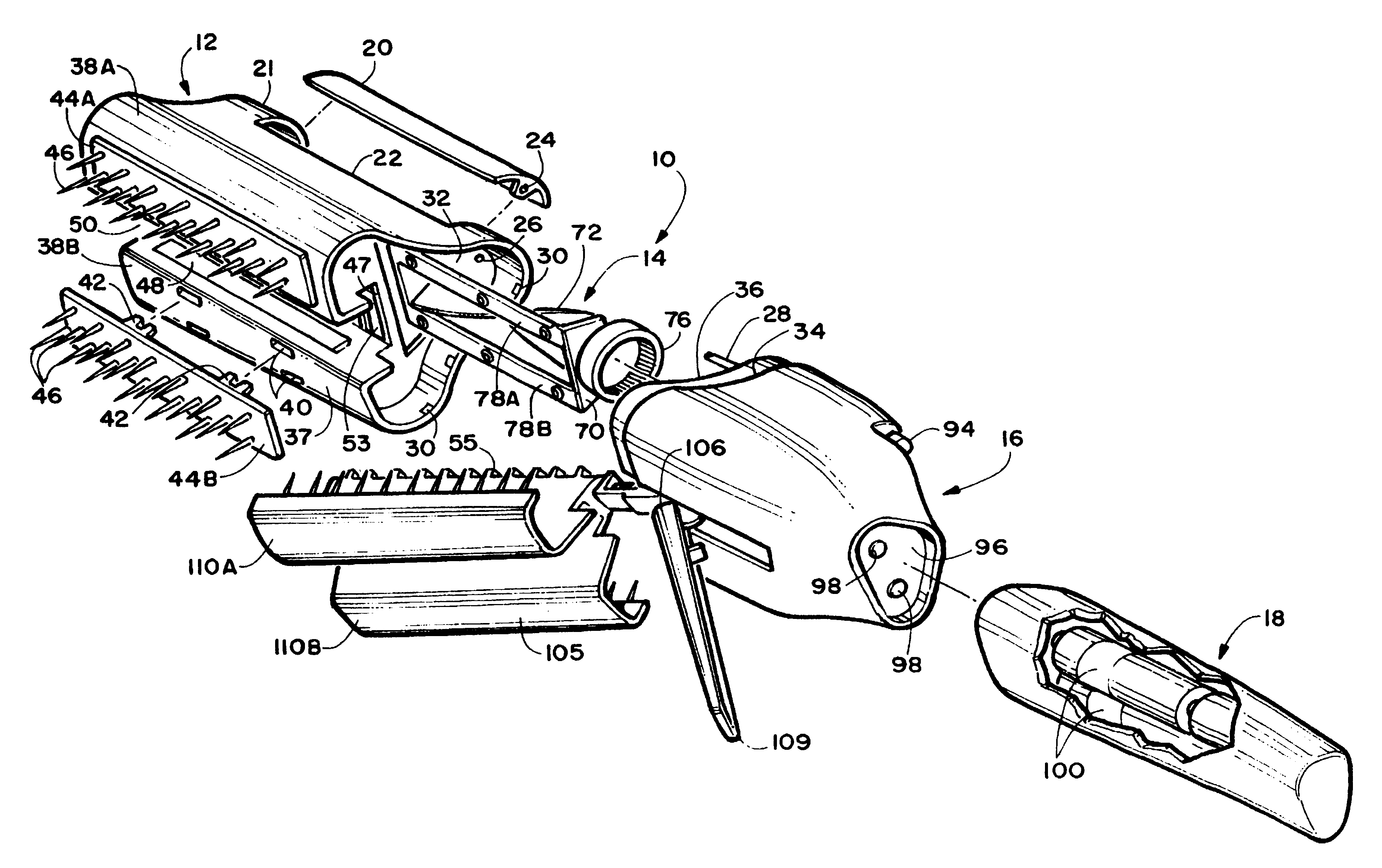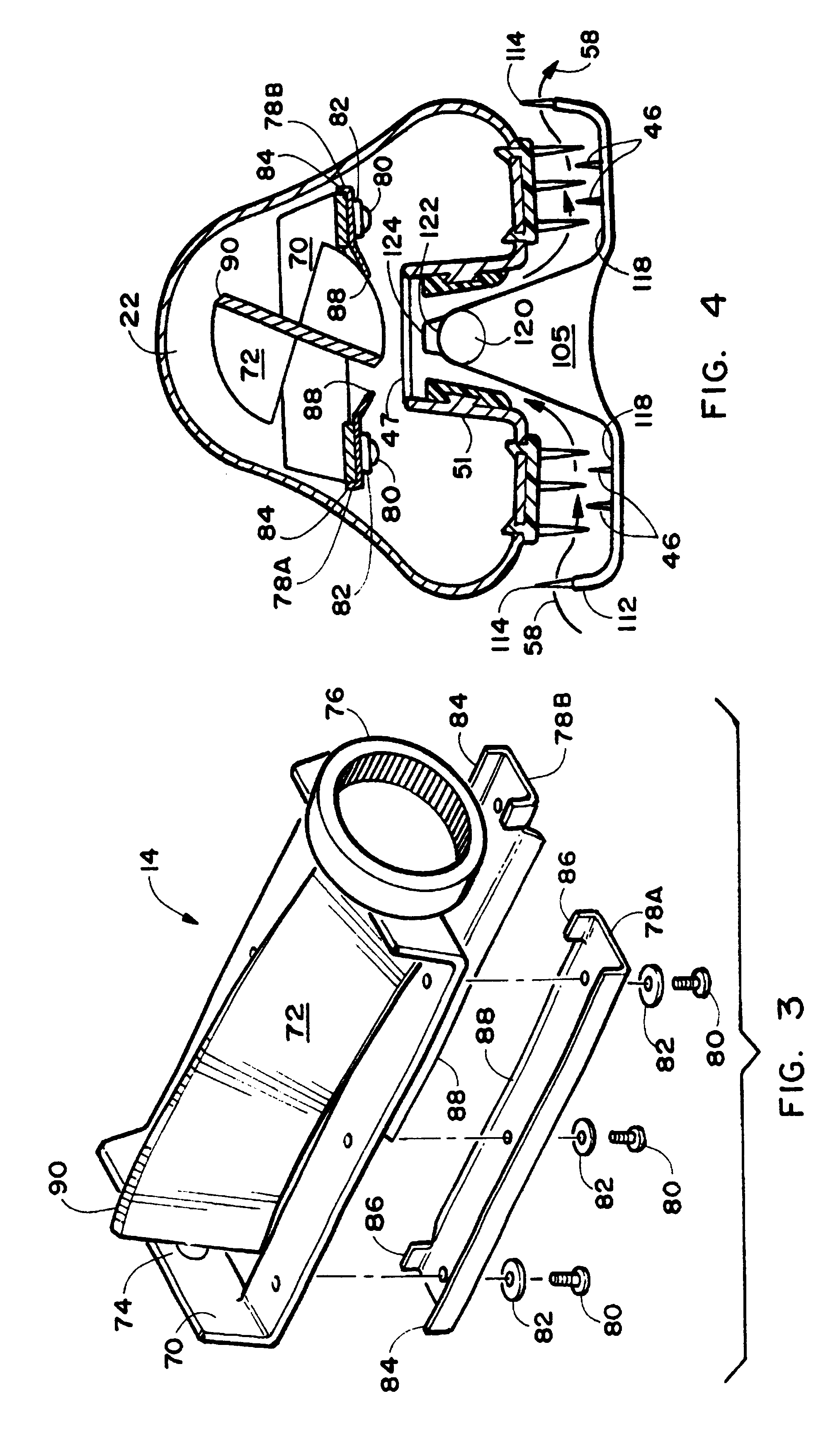Hair trimming device with removably mountable components for removal of split ends and styling of hair
a hair trimming and component technology, applied in the field of hair trimming devices, can solve the problems of hair looking unhealthy and unfashionable, the method of cutting split ends by highly trained stylists or amateurs involves a time-consuming process, and the head of hair of the person receiving the hair cut is damaged
- Summary
- Abstract
- Description
- Claims
- Application Information
AI Technical Summary
Benefits of technology
Problems solved by technology
Method used
Image
Examples
Embodiment Construction
Referring now to the drawing FIG. 1 showing an exploded perspective view of the hair trimmer assembly 10. The cutter head assembly 12, the cutter blade assembly 14, the cutter body assembly 16 and the handle 18 are the major components of the hair trimmer assembly 10. The cutter head assembly 12 is shown with the transparent hair removal door 20 exploded away from the top lobe 21 of the internal containment area 22 that holds the cut ends of the hair shafts 23 drawn through the device and trimmed. The locking orifice 24 in the end matches the orifice 26 in the cutter head that is in alignment with the locking pin 28 located in the cutter body 16 so that when the cutter head assembly and the cutter body are assembled, the hair removal door 20 cannot be removed thereby providing a means to prevent access to the internal containment area 22 during operation of the device 10.
A plurality of raised ridges 30 around inside perimeter edge of the female end 32 of the cutter head assembly 12,...
PUM
 Login to View More
Login to View More Abstract
Description
Claims
Application Information
 Login to View More
Login to View More - R&D
- Intellectual Property
- Life Sciences
- Materials
- Tech Scout
- Unparalleled Data Quality
- Higher Quality Content
- 60% Fewer Hallucinations
Browse by: Latest US Patents, China's latest patents, Technical Efficacy Thesaurus, Application Domain, Technology Topic, Popular Technical Reports.
© 2025 PatSnap. All rights reserved.Legal|Privacy policy|Modern Slavery Act Transparency Statement|Sitemap|About US| Contact US: help@patsnap.com



